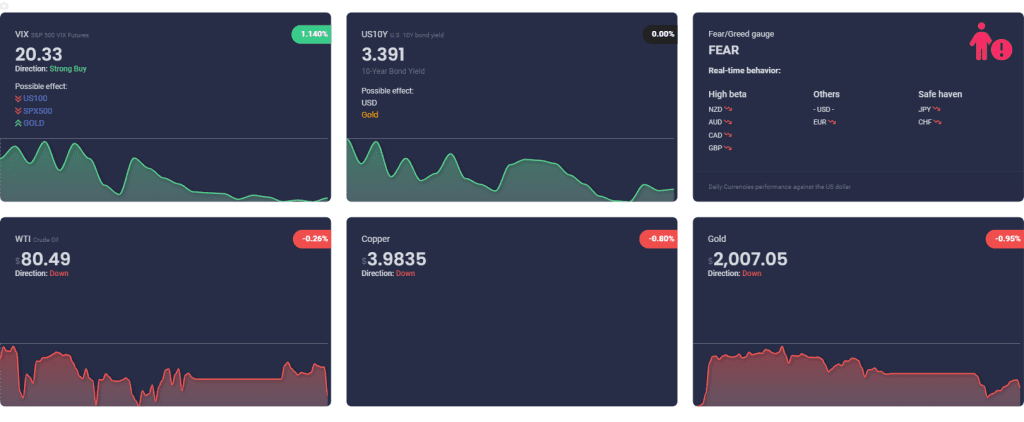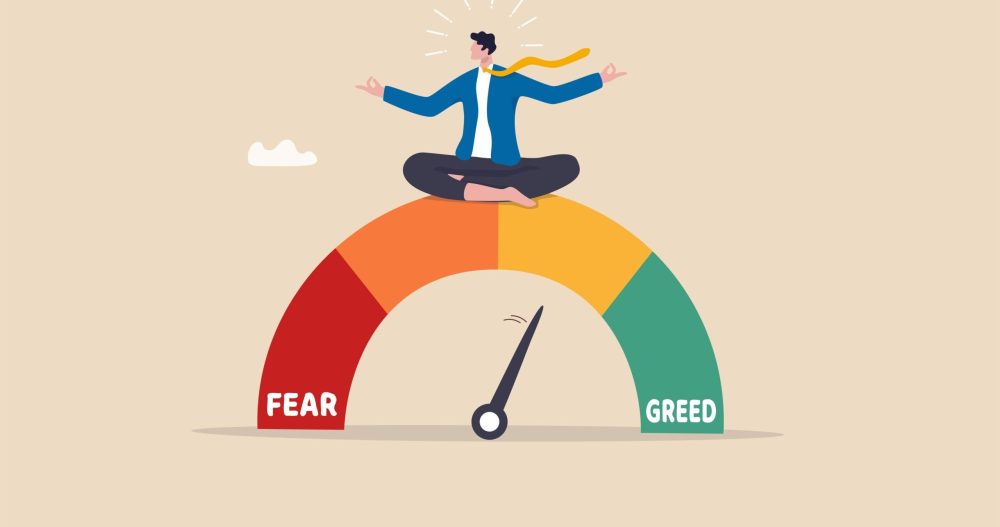What is VIX and how we can use it in our trades?
First let to learn about Fear, greed, and risk in financial markets.
Fear and greed in financial markets

Fear and greed play a significant role in financial markets. Fear can cause investors to sell their holdings and panic, resulting in a drop in market prices. Greed, on the other hand, can lead investors to take on excessive risks in search of high returns, which can result in significant losses. Both fear and greed can be detrimental to long-term investment success, as they often lead to impulsive decision-making and neglect of sound investment principles. It is essential to manage these emotions and make rational decisions based on careful analysis and understanding of market trends. By being aware of the psychological factors that influence financial markets, investors can make informed decisions that will help them achieve their investment goals.
RISK sentiment in the Forex market
Risk sentiment is a critical factor in the forex market, influencing the behavior of traders and determining the direction of currency movements. At its core, risk sentiment refers to the level of risk appetite or aversion among investors, which in turn drives market sentiment. When risk sentiment is high, traders are more willing to take risks and invest in high-yield currencies or emerging markets, while in times of low-risk sentiment, traders are more likely to seek safe-haven assets, such as the US dollar or the Japanese yen. Therefore, understanding and monitoring risk sentiment is crucial for forex traders to make informed decisions and capitalize on market opportunities.
Read more about risk and sentiments
NOW, What is the VIX index?
The VIX index, also known as the “fear index,” is a measurement of the market’s expectation of volatility in the next 30 days. The VIX is calculated using the prices of put and call options on the S&P 500 index. When the VIX is high, it indicates that investors are expecting a lot of volatility in the market, which can be an indication of fear or uncertainty. Conversely, a low VIX can indicate that investors expect the market to be relatively stable. The VIX is an important tool for traders and investors to gauge market sentiment and make informed decisions about their investments.
How to trade gold or USD by VIX indicator?
When it comes to trading gold or USD using the VIX indicator, it’s important to understand the relationship between the VIX and these assets. Typically, when the VIX is high, investors tend to flock to safe-haven assets like gold and the USD. Therefore, traders can use the VIX as a signal to buy these assets when the index is high and sell when it’s low.
Generally, a VIX value lower than 20 indicates a Risk-On market and traders don’t fear buying risky assets like AUD, NZD, CAD, and GBP.
On the other hand, a VIX value higher than 20 and above is considered a Risk-Off market, indicating that traders are more risk-averse and tend to buy safe-haven assets like USD, JPY, CHF, and gold.
However, it’s important to note that the VIX is not always a reliable indicator and should be used in conjunction with other technical and fundamental analyses. Additionally, traders should always practice proper risk management techniques when trading any asset. You should always use other technical and fundamental analysis tools to make informed trading decisions. Additionally, it is important to keep track of global events and news that can affect market sentiment and volatility.

The Vix value and risk of the market can find on our Ziwox Terminal Market summary page.



Leave a Reply
You must be logged in to post a comment.